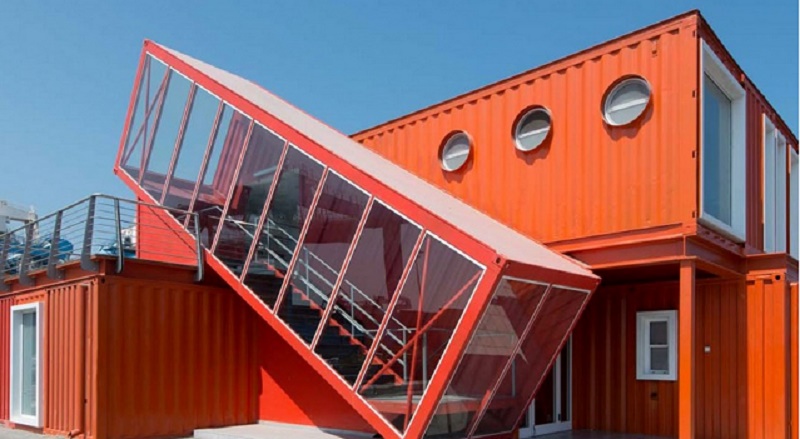Trade and the transportation of goods, like food or Amazon orders, has recently become easier. In the past, physically handing an item to a customer was the closest thing to overnight shipping. Maritime, freight, and air shipping increase the ability to access or send items that are not widely available. Shipping containers play a significant role in transporting and protecting traveling goods. These water-proof containers are finding new life as a local storage solution and even as mobile workshops.
Shipping Container History
In the 1950s, an emerging need for sealed containers capable of transporting goods door-to-door became very apparent. Clogged highways and theft in the docks required a serious solution to free up the highway system and to protect goods during transport. A United States truck operator named Malcolm McLean suggested moving truck trailers by ship. This suggestion would lead to the revolutionary idea of removing the wheels from the trailers and making them stackable. In 1953, McLean conceived the idea of the shipper container.
Transitioning the shipping container from suggestion to reality meant a massive infrastructure overhaul for everything related to freight transportation. Cranes, dockyards, rail cars, ships, and trucks had to be reconfigured and redesigned for this idea to work. Decisions such as the material for shipping containers, how to speed up the transition from ship to freight, and identifying a vessel to accommodate these new creations fell to a man named Keith Tantlinger. In 1956, a ship called “Ideal-X” made its maiden voyage as a container vessel. 15 years later, the International Organisation for Standardisation determined the standard sizes and required fixings for shipping containers.
What Can They Do?
Shipping containers are structurally engineered to endure handling, shipment, and storage with a minimal amount of damage to its contents. Sizes range from 8’ to 40’ in length and are typically composed of steel or wood. These durable containers are transferrable by train or sea to various locations across the globe. Some folks use shipping containers for storing machinery for year-round farming. Other individuals have even made homes out of shipping containers, which led to the adaptation of shipping containers to be used as workshops or temporary sleeping locations.
There are a variety of shipping containers to choose from when planning the next transportation of goods. Shipping containers for sale in NZ are available in brand new condition, the second-hand range, and as-is quality. This range of quality means that shipping containers are attainable regardless of one’s budget. A quality retailer will offer different sizes, grades of usage, and assistance with modifications to its customers. Some facilities will also offer leasing arrangements if the shipping container is only needed temporarily.
These containers are the unsung heroes in the growth of capitalism and economic expansion. Shipping containers play crucial roles in making things happen, such as the transportation of crops or diesel fuel. Globalisation is possible in large part because of the ability to use shipping containers to move goods from one location to another. Shipping containers can even make a small impact in the local community by serving as a secure storage unit for household items during a renovation. These implements can also be used as a kiosk for a local business. With shipping containers, anything is possible.



